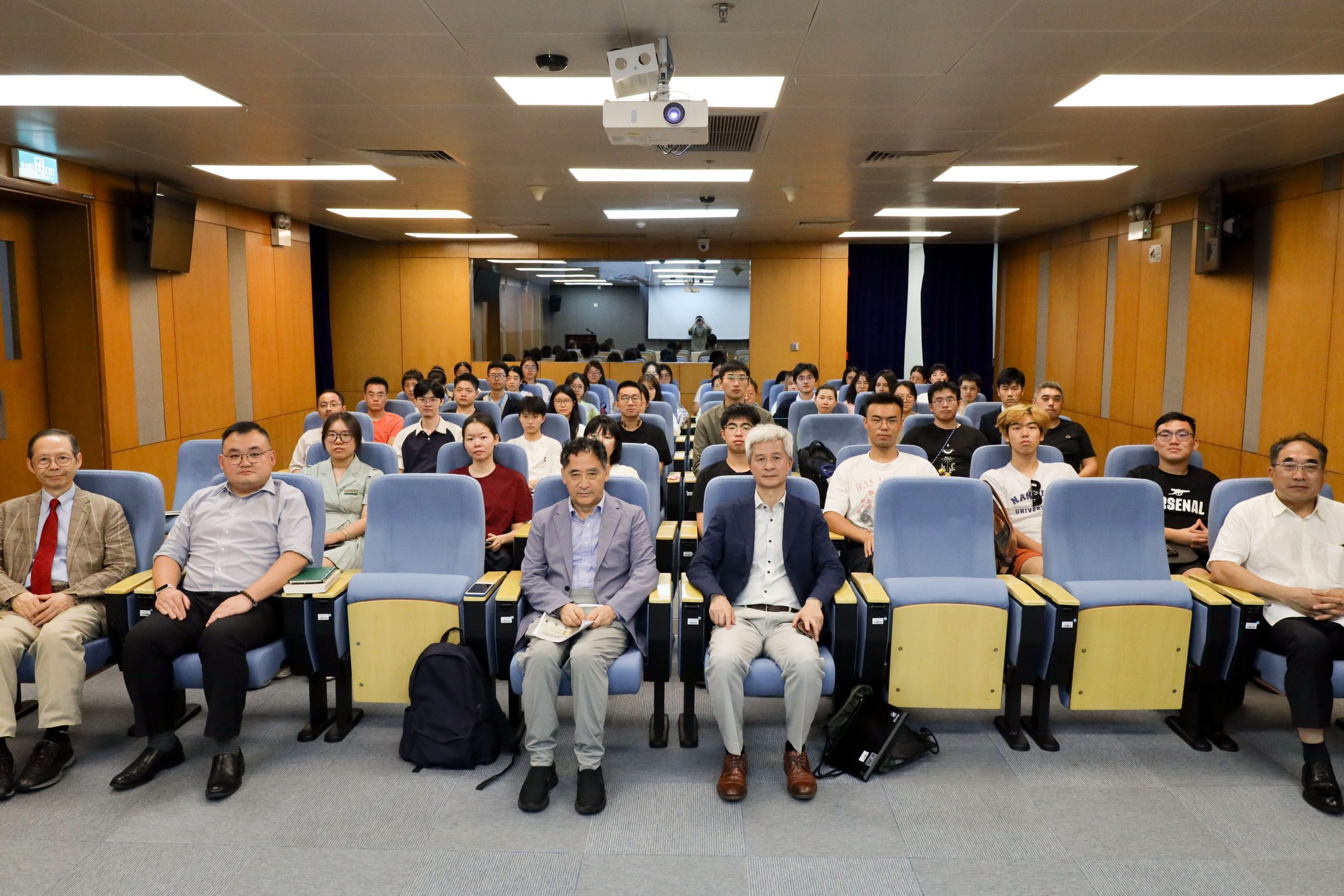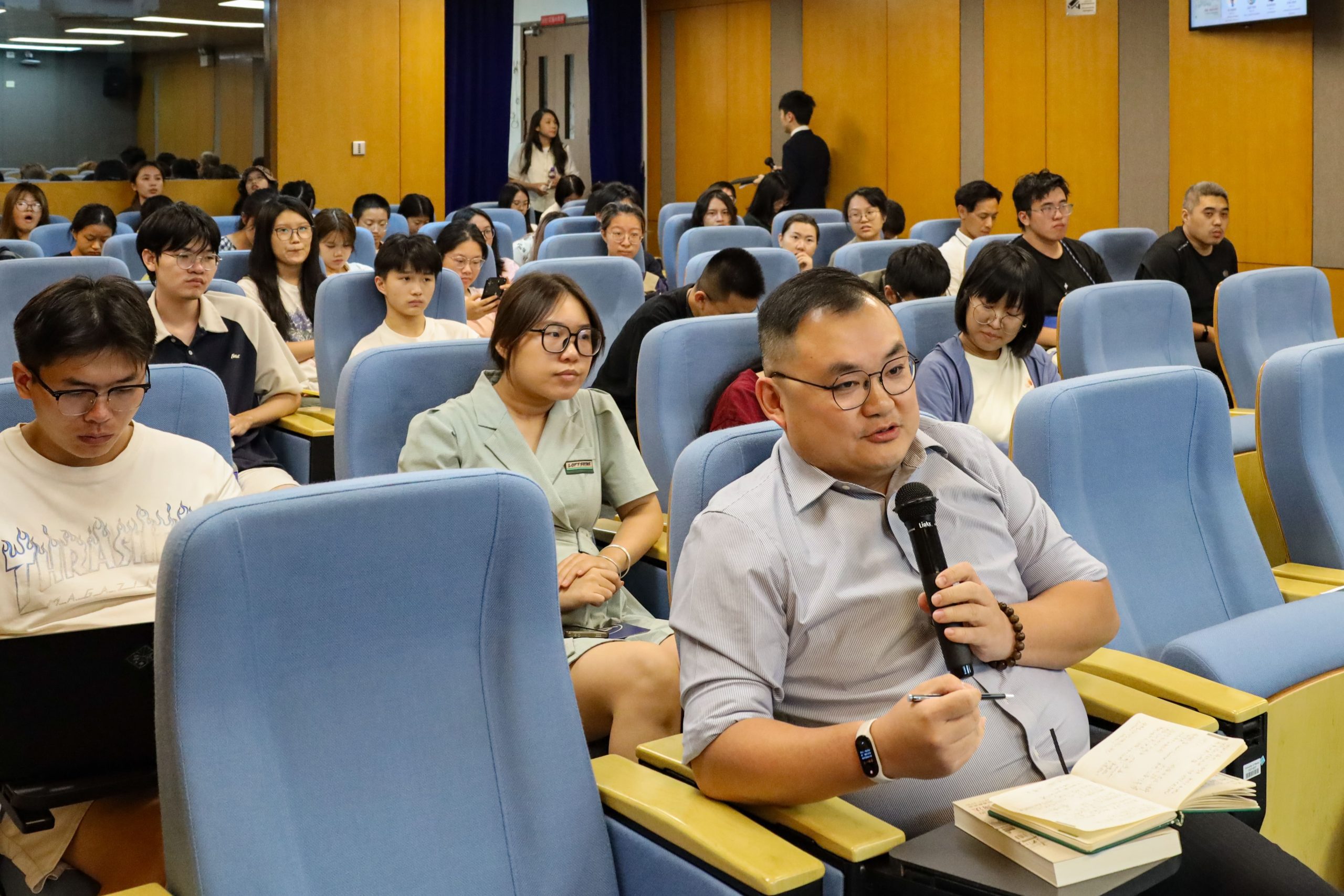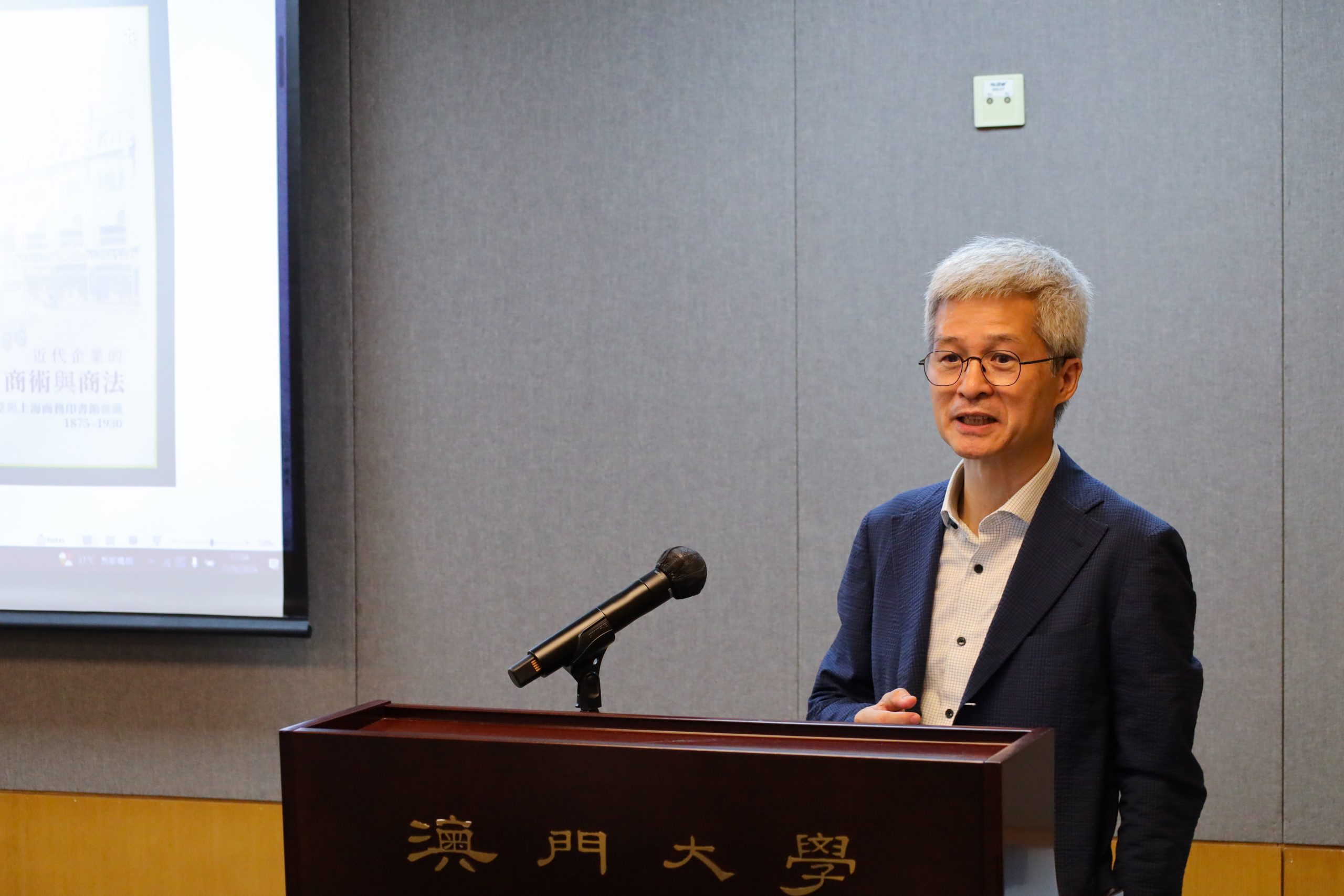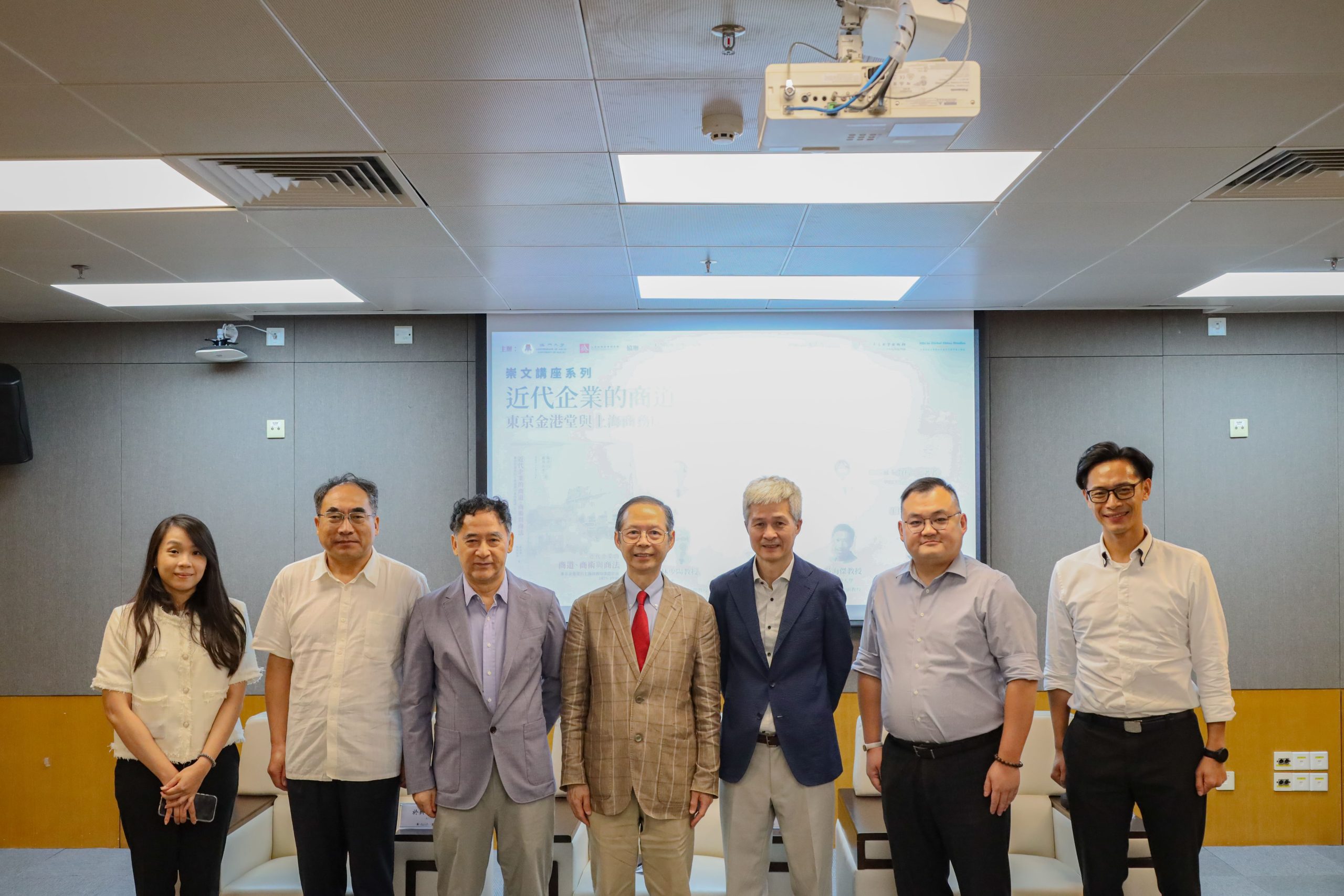【IAS】Lecture on Frontiers in Humanities – Morality, Rationality and Legality of Modern Corporations: Tokyō Kinkōdō and Shanghai Commercial Press (1875-1930) was successfully held
【高研院】崇文講座系列:近代企業的商道、商術與商法:東京金港堂與上海商務印書館雜識 (1875-1930)成功舉行

由澳門大學人文社科高等研究院(高研院)主辦,香港大學香港人文社會研究所及商業史研究組、香港中文大學歷史系及比較及公眾史學文學碩士課程、香港科技大學環球中國研究理學碩士課程、香港中文大學出版社協辦的崇文講座系列於2024年9月27日在澳大展館演講廳成功舉行。
此次講座主題為「近代企業的商道、商術與商法--東京金港堂與上海商務印書館雜識(1875–1930)」,由香港大學香港人文社會研究所院士、香港大學法律學院訪問研究員、澳門大學法學院客席講座教授蘇基朗教授主講,並由澳門大學人文學院歷史系特聘教授、高研院學術項目與刊物主任林少陽教授,香港大學香港人文社會研究所助理教授孟嘉升教授以及香港大學法律學院副教授吳海傑教授擔任與談人,以及澳門大學法學院講座教授、高研院院長於興中教授擔任主持人。
蘇基朗教授首先探討了中國企業家如何與新型企業制度及公司法律互動。他介紹了商務印書館作為晚清首批登記的股份有限公司的歷史,以及金港堂作為明治時期首批股份有限公司的龍頭企業相關背景,並比較了近代中日企業文化的異同。蘇教授分析了日本金港堂與商務印書館在管理與經營模式上的差異,並得出了金港堂一代衰退而商務印書館百年不衰的原因與結論。
林少陽教授探討了印刷技術傳入歐洲、新教興起以及國家建構間的關聯,並分析了中國與日本印刷技術的相互影響。他亦深入研究了商務印書館等民族企業與國家命運之間的關係。吳海傑教授則指出,在20世紀民國的巨變中,商業模式和印刷技術都經歷了顯著變化。他關注民間習俗與大眾思考模式是否發生了變化,以及近代印刷業企業家的精神風貌如何演變。
孟嘉升教授提出本書對「大分流」問題的啟示,以及19世紀與20世紀日本與中國之間經濟發展不同道路的分析。最後,孟教授詢問了兩位作者如何進行研究,並收集如此豐富的一手史料的過程。在討論階段中,蘇基朗教授從微觀的角度回應了關於中日印刷業之間民間可信度的問題,以及日本金港堂與商務印書館在十年合作中所出現的各種情況,為參與者提供全面的理解。
此次活動吸引了線上及現場近一百七十名觀眾的廣泛參與,引發了關於近代企業的商道、商術與商法的熱烈討論。
On September 27 2024, Lecture on Frontiers in Humanities was successfully held at University Gallery Auditorium, jointly organized by the Institute of Advanced Studies in Humanities and Social Sciences (IAS) of University of Macau, the Hong Kong Institute for the Humanities and Social Sciences and Chinese Business History cluster, the Department of History and the M.A. Programme in Comparative and Public History of the Chinese University of Hong Kong, the MSc in Global China Studies program of the Hong Kong University of Science and Technology and the Chinese University of Hong Kong Press.
The theme of this lecture was “Morality, Rationality, and Legality of Modern Corporations: Tōkyō Kinkōdō and Shanghai Commercial Press (1875-1930).” It was convened by Professor Billy K. L. So, Fellow of the Hong Kong Institute for the Humanities and Social Sciences, Visiting Fellow of the Faculty of Law at The University of Hong Kong, and Adjunct Chair Professor of the Faculty of Law at the University of Macau. Professor Shaoyang Lin, Distinguished Professor of the Department of History of the Faculty of Arts and Humanities at the University of Macau, Head of Academic Programme and Publication of IAS, Professor Ghassan Moazzin, Assistant Professor of Hong Kong Institute for the Humanities and Social Sciences of the University of Hong Kong and Professor Michael Ng, Associate Professor of the Faculty of Law of the University of Hong Kong, were invited as discussants. Professor Xingzhong Yu, Chair Professor at the Faculty of Law at the University of Macau and Director of IAS served as moderator.
Professor So first proposed how Chinese entrepreneurs interact with the new corporate regulations and company laws. He introduced the relevant history of the Commercial Press as one of the first registered limited companies in the late Qing Dynasty and Kinkōdō as the leading enterprise among the first batch of limited companies in the Meiji period. Professor So introduced the two corporations’ different management and business modes, drawing reasons and conclusions for Kinkōdō’s decline and the Commercial Press’s prosperity.
Professor Lin proposed the connections between the spread of printing technology to Europe, the rise of Protestantism, the formation of nations, the relationship between printing technology in China and Japan, and the development of national corporations like the Commercial Press. Professor Ng suggested that during the significant changes in the Republic of China in the 20th century, there were shifts in business models and printing technology, along with potential changes in folk customs and public thought patterns. He also highlighted the spirit of modern printing industry entrepreneurs.
Professor Moazzin proposed the Great Divergence issue as the inspiration for this book, which explores the distinct paths of economic development taken by Japan and China during the 19th and 20th centuries. He raised questions about how the two authors researched the book and gathered a lot of firsthand historical materials.
During the discussion, Professor So addressed questions from a micro perspective regarding the reliability of the Chinese and Japanese printing industries. He also discussed the challenges encountered during the ten-year collaboration between the Kinkōdō and the Commercial Press.
The event drew almost 170 participants, both online and on-site, sparking lively discussions on the morality, rationality and legality of modern enterprises.






